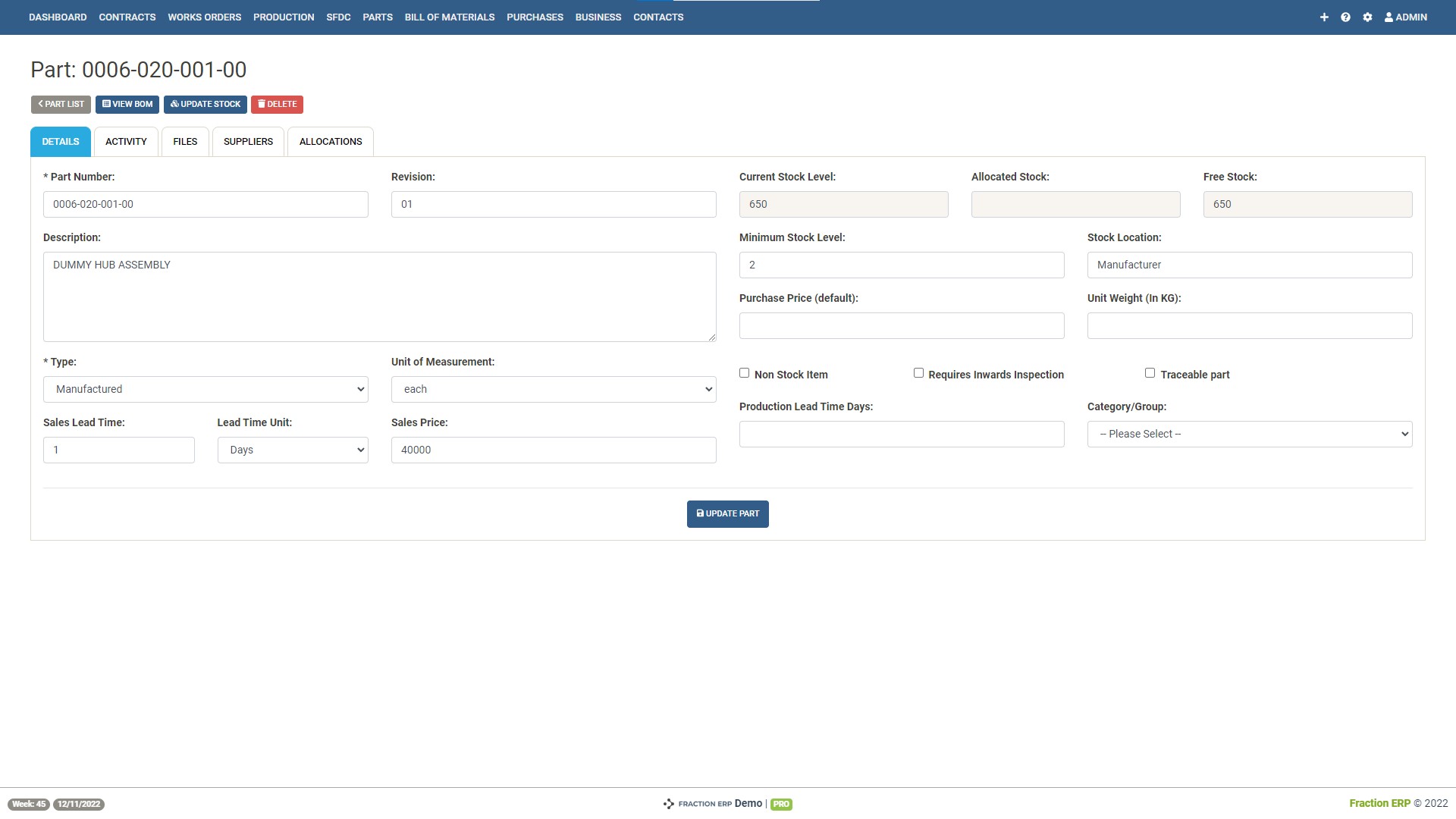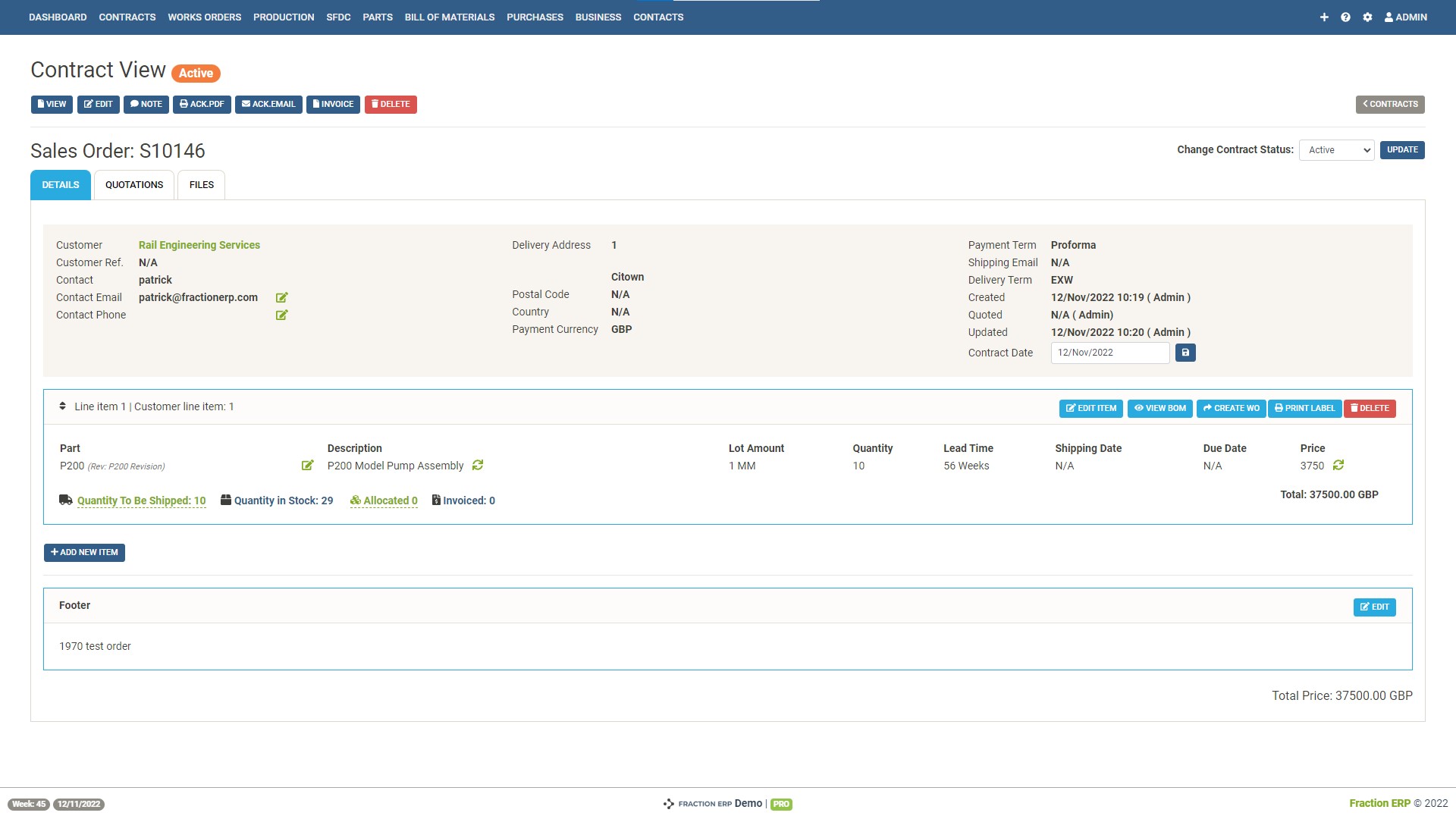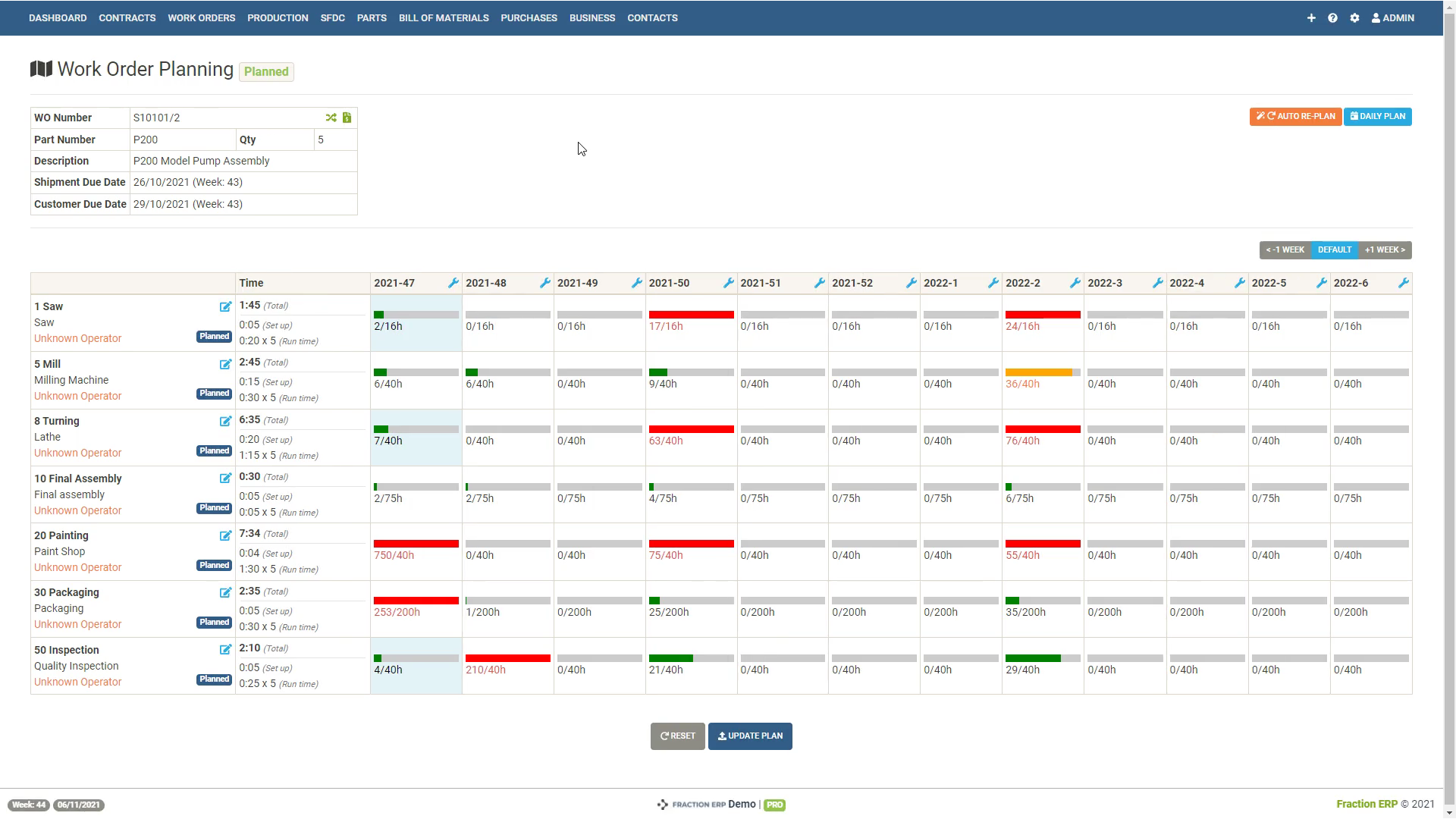How an ERP system works
Moving from spreadsheets and whiteboards, to an ERP system, is a big jump for many businesses. For many, understanding how an ERP system works is still unclear.
Fraction ERP makes moving to an ERP system painless. Knowing how an ERP system works is still important however.
In this article we are going to provide you with a basic understanding of how most ERP systems work. The intention of this article is to:
- Help you get the most out of your system.
- Take away some of the fear around this topic.
The basic sequence
Most ERP system have a series of interconnected modules. We will list out the most common modules in a rough sequence of how they work together.
Each heading has been linked to our features page. If you want more information about what our module do / comprise of, click the link.
Parts
Everything that moves through your ERP system is made from parts. These could be individual components or complex assemblies. You’ll need to identify raw materials also.
Most ERP systems will allow you to defined parameters for your parts. These include minimum stock levels and re-ordering points.

Part configuration screen from Fraction ERP
Bill of Materials (BoM) / Routing
Once you have parts in your system, you create structures and manufacturing routes. A route is a series of operations that you perform to convert parts into another part / product. The BoM tells you what the ingredients are for your product.
Fraction ERP has the product structure and operations combined in one screen. This allows for instant job costing to take place as you build your BoM and route.
Quotes
Now you have ‘products’ and parts in your ERP system you can quote. This allows you to take your products, add a margin and submit to your customers.
We’ve built in direct email quotes to Fraction ERP. Our system also has the ability to adjust your quotes without losing the history.
Sales Orders
When you convert a quote into a won order it is usually called a sales order. This introduces demand into your ERP system, for you to do something.
This ‘something’ might be shipping from stock, buying materials or producing a works order.

Sales order view
Demand (MRP)
Leading on from the last point, you often manage demand in an ERP system via an MRP screen. MRP stands for Materials Requirements Planning, a term that has been around since 1975.
Fraction’s MRP screen shows you what you need to purchase and manufacture. Bulk operations can take place here to save time.
Works Orders
Works orders are your instructions to the shop floor. It should tell them what they need to make and what operations to perform.
From here, your ERP system will most likely have a work to list function, that tells them when to perform the operations. See next point.
Scheduling
There are a lot of variations between ERP systems to schedule the works order operations. Some are automatic and some are manual.
Fraction ERP uses a visual scheduling board to allow you to drop your operations into your existing schedule. It shows you how busy your work stations are before you commit more work.

Visual production scheduling screen
Purchase Orders
Once you know when you are going to make your production order, you’ll know when you need materials. ERP systems, from the MRP element, will know your existing stock levels. From this it can then work out what the balance of materials is that you need to purchase.
Fraction ERP has built in email functionality for this activity. You can send purchase orders straight to your suppliers.
Shop Floor Data Collection (SFDC)
Once production orders are in progress, tracking them becomes vital. This is especially true if you want to save management time. ERP systems vary in how they do this but SFDC is a common practice. This allows your shop floor team to log onto a works order and update progress.
Fraction ERP has made SFDC users free when you take out a subscription. SFDC shouldn’t be a financial consideration when you introduce an ERP system.

Works order tracking - management view
Inventory
When you complete a works order your inventories should update. Raw material stock levels decrease and finished product levels increase. Some ERP systems utilise kitting at the start of the works order. Other ERP systems utilise ‘backflushing’ to automatically adjust stock levels.
We’ve opted for backflushing within Fraction ERP. We’ve also included a simple stock adjustment process to help with your stock control.
Shipping / Despatch
After manufacturing has concluded you’re ready to despatch. Completing your sales order removes finished products from inventory. This then allows you to create delivery notes and despatch your orders.
Invoicing
After the products have left your premises, you can create an invoice. You have two main options within Fraction ERP. Option one is to send this via email from Fraction ERP. The second option is to push the invoice into your web accounting package and handle it there.
Fraction ERP’s workflow
To help explain how this all works together in Fraction ERP we have a simple diagram, see below.

Fraction ERP’s workflow
Self-onboarding
Adopting an ERP system isn’t meant to be difficult. We have stripped back the complexity of an ERP system to create Fraction ERP. As a result we have a self-onboarding process, which is available via our support website.
We offer online support as part of the monthly subscription fee. However, most of our users find that this resource is enough.
Another key feature of Fraction ERP is that you can use only the modules that you want to use. If you aren’t ready for scheduling then you can skip that step until you are ready. If you want to purchase without using the MRP screen, you can do that too, for example.
We wanted to take the pain and effort out of moving from spreadsheets to ERP. Hopefully you can see how this is possible with Fraction ERP.
Free demo and trial
If you’d like to learn more about Fraction ERP then sign up for a free demo. We’ll give you a guided tour of the system and show you how it could work for the way you run your business.
If you like the look of Fraction, you can then have full access to our ERP system for two weeks at no cost. From there you can start a subscription, if our system looks like a good fit. You can view our pricing information here.
We hope this article has given you a better insight into how an ERP system works. If you have any questions, feel free to reach out.